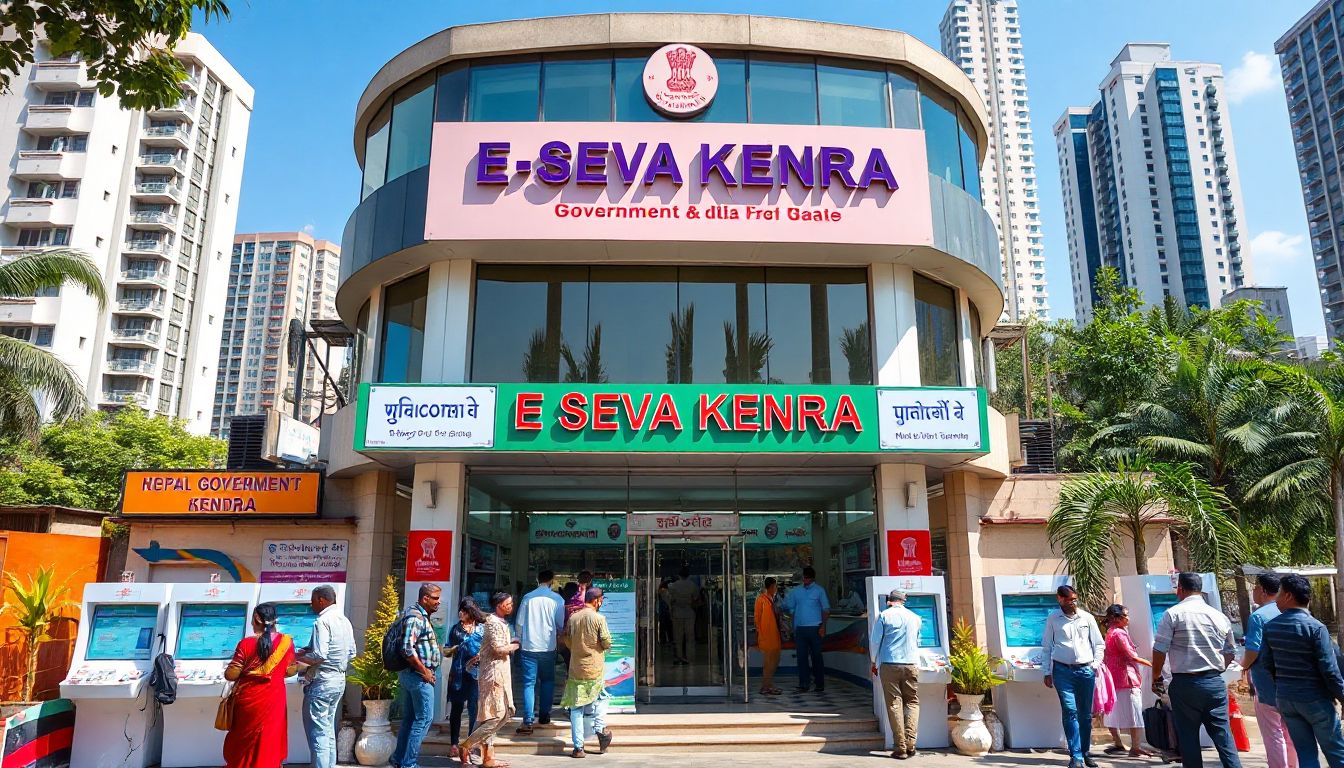Guide to Establishing a Digital Service Center
Introduction
In India, governments are pushing for better online access to services. This makes life easier for citizens and cuts down on paperwork. E Seva Kendras are key to bringing government services closer to people. They empower local entrepreneurs and organizations to serve their community. If you're thinking about starting an E Seva Kendra, you're on the right track. This guide walks you through everything— from understanding the concept to running a successful center.
Understanding E Seva Kendra: Concept and Significance
What is an E Seva Kendra?
An E Seva Kendra is a local hub where citizens can access various government services in one place. These centers are set up to make it easy for people to do things like get birth certificates, pay bills, or get licenses. The idea started a few years ago and has grown fast. They work with portals like Mee Seva, CSC (Common Service Center), and state-specific platforms.
The Importance of E Seva Kendras in Digital India
These centers help bridge the gap between people and technology. They promote digital literacy by showing citizens how to use online services. Plus, they cut down wait times and reduce corruption. Governments see E Seva Kendras as a way to make governance transparent and accessible.
Key Benefits for Citizens and Entrepreneurs
For citizens, E Seva Kendras mean faster service with less travel and hassle. For business owners, they open up new avenues for income. You can charge a small fee for services or act as a service provider. Setting up such a center also makes you a local hero by improving access to government programs.
Eligibility Criteria and Legal Framework for Starting E Seva Kendra
Who Can Start an E Seva Kendra?
Anyone with basic education and some business experience can apply. Individuals, groups, or organizations like NGOs or local agencies can own a center. The key is having a good location and trustworthiness.
Legal and Regulatory Requirements
Register your business properly. Registration can be as a sole proprietorship, partnership, or company. Get a GST registration if you plan to handle transactions over a certain amount. Also, follow local laws for permits and licenses. Keep data safety in mind—protect citizen info like it’s your own.
Licensing and Permissions
You may need approvals from district or state authorities before opening your center. Partner with government portals and service agencies to link your center properly. Without these, your center won’t be authorized.
Step-by-Step Process to Establish an E Seva Kendra
Conducting Feasibility and Market Research
Start by checking how many people need your services nearby. Pick a location with good foot traffic—like markets, bus stops, or residential areas. Also, see if other centers are nearby and what services they offer. Differentiate yourself with better quality or services.
Registering the Business and Obtaining Necessary Licenses
Next, register your business. You can choose a sole proprietorship or form a partnership or company. Apply for all needed licenses like GST and local permissions. Make sure your paperwork is in order.
Partnering with Government Portals and Service Providers
Contact portals like Mee Seva or CSC. Sign MoUs (memorandums of understanding) to become an authorized service provider. This linkage allows your center to offer official government services smoothly.
Infrastructure Setup and Technology Requirements
Choose a good location with enough space. Buy computers, printers, scanners, and internet connection. Invest in antivirus software and security measures to keep data safe. Create a friendly environment for visitors.
Staff Recruitment and Training
Hire honest, friendly staff with good communication skills. Train them on how to operate the software, handle citizens’ questions, and maintain data security. Well-trained staff make all the difference.
Launching the E Seva Kendra
Plan a small launch event to invite locals and officials. Use flyers and social media to spread the word. A warm welcome encourages trust and builds reputation from day one.
Operational Best Practices and Management
Service Portfolio Management
Offer popular services like UID/Aadhaar updates, passport applications, and bill payments. Keep an eye on local needs and add new services accordingly over time.
Customer Service and Support
Make sure visitors leave happy. Listen to their feedback and improve. Display clear instructions and help desks to guide people through procedures.
Monitoring and Performance Metrics
Regularly check how well your center is doing—wait times, service quality, and customer satisfaction. Use simple data to tweak operations and stay efficient.
Marketing and Community Engagement
Build ties with local groups and authorities. Run small outreach programs or awareness camps to get more people to visit. Word of mouth can be powerful.
Challenges and Solutions in Running an E Seva Kendra
Common Challenges
Technological glitches happen, causing delays. Staff might lose motivation or lack training. Heavy footfalls can overwhelm the center.
Practical Solutions
Invest in reliable tech equipment. Keep staff updated with ongoing training. Implement appointment systems and queues to better handle visitors.
Conclusion
Starting an E Seva Kendra is a great way to bring government services to your community. Follow the steps— from research and registration to infrastructure and staffing— and your center can thrive. It’s a noble effort that makes life easier for citizens and offers good business potential. With proper planning, compliance, and a customer-first attitude, your E Seva Kendra can become a trusted local hub for government services. Digital growth is transforming governance—be part of that change today.
